1931 was certainly a great year for horror as not only did it see Bela Lugosi bringing his performance of Bram Stoker’s Dracula to the big screen the world was also treated to a more sympathetic monster in the form of James Whales' adaptation of Mary Shelley’s Frankenstein, starring the great Boris Karloff, and where Lugosi's film was a supernatural tale of dark sexuality Karloff's was a journey into the darker realms of science fiction.
As was the case with Tod Browning’s Dracula, James Whale’s Frankenstein is not so much based on the book as it is on the numerous stage plays that were produced after the success of Mary Shelley’s gothic tale of science and horror, in fact, the plot of Whale’s film has very little to do with the source material, other than a mad scientist bringing a corpse to life, and the creature performed by Boris Karloff was very different from the one depicted in the novel. With a film five minutes shorter than Tod Browning’s film vampiric tale, Frankenstein runs a brisk 70-minutes in length, James Whale didn’t waste much time getting to the meat of things as the film opens with Henry Frankenstein (Colin Clive) and his hunchbacked assistant Fritz (Dwight Frye) partaking in a little lite robbing a grave so that Henry could have the proper material to bring his experiments to fruition.
I wonder if Fritz got paid extra for working the graveyard shift.
And what exactly are these experiments, the ones that need freshly unearthed corpses? Turns out that Henry is one of those quintessential mad scientists who wish to dabble in God’s domain, in this case, it is in the creation of life itself, which for Frankenstein means cobbling together a patchwork of body parts that he hopes to instill with life through the application of electricity – you can’t have great mad science without a nice electrical storm – and the final ingredient he needs to finish his work is that of a brain, unfortunately, the job of securing such an item he leaves to his less than reliable assistant Fritz, which results in the clumsy hunchback bringing back the corrupt brain of a criminal rather than that of a nice healthy one. To be fair to Frankenstein, the employment pool of assistants who would be up for grave-robbing, as well as committing acts that are affronts to God, must have been rather small.
Help Wanted: Seeking a person with questionable morals, physical deformities are not a must but appreciated, smokers need not apply.
Not everyone is thrilled with Henry’s activities, his wife Elizabeth (Mae Clarke) and her "close" friend Victor (John Boles) are both concerned with Henry’s current obsession and they seek out his old mentor Doctor Waldman (Edward Van Sloan) in the hopes that he could talk his former pupil down from his lofty perch atop an ancient watchtower located in the heart of the Bavarian mountains. Of course, this is easier said than done because talking a mad scientist out of performing his mad science is usually a futile gesture as obsession goes hand in hand with madness, and before you can say “Crazy, am I? We'll see whether I'm crazy or not” lightning is flashing, electrical diodes are sparking, and life is being infused into Frankenstein’s creation. Colin Clive's somewhat manic performance in this film is a wonderful counterpoint to Karloff's rather silent one and minimalist approach, and when Clive bellows "Oh, in the name of God! Now I know what it feels like to be God!" you get everything you need to know about his character.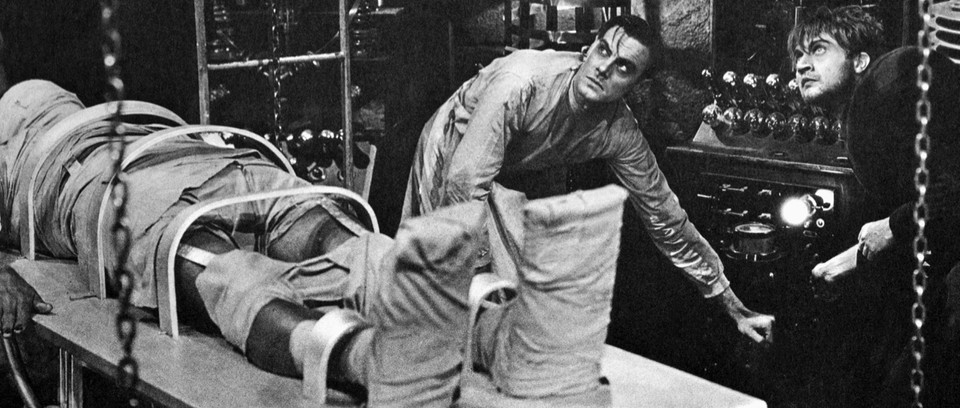
Note: The laboratory in this film was a creation of art director Charles D. Hall and electrician Kenneth Strickfaden and it became the model of mad scientist lairs for decades to come.
As mentioned, there isn’t much from Mary Shelley’s novel to found in this cinematic adaptation, in fact, her description of the creation of the Monster was rather vague in her book, with the young doctor simply stating “I collected the instruments of life around me, that I might infuse a spark of being into the lifeless thing that lay at my feet” which left a lot of room for Strickfaden and James Whale to get creative with their science, but where the book and the movie really diverged is in the creature itself. In the book, the creature was a wholly articulate being who confronts his creator with its own disappointment in itself "I ought to be thy Adam, but I am rather the fallen angel" Worse yet is the fact that Frankenstein himself is repulsed by the appearance of the creature, whose watery white eyes and yellow skin barely conceal the muscles and blood vessels underneath, and the doctor flees like the abject coward he is. Not so the creation of James Whale, his Monster (Boris Karloff) was a mute creature of pathos and hardship, being thrust into a world against its will and is almost immediately subjected to the tortures of the hunchback Fritz. The Monster in the film is a sympathetic creature, and much of this is due to Karloff’s brilliant pantomime performance, and though the creature commits a series of murders it's hard to lay the blame solely on him as it's his childlike mind that simply strikes out in self-defence, or in the case of the unfortunate drowning of the little village girl Maria (Marilyn Harris), it’s more a case of a complete lack of understanding.
I lay some of the blame on the parents living by a lake and not teaching their kids to swim.
The creature from the book is a creature fueled by hatred for having been abandoned by his creator, who is then forced to wander a world that wants no part of him, and just how unfriendly is the world to this hapless creature? Well, he does befriend a blind hermit but is quickly chased off by the man’s family when they arrive, he rescues a child from drowning but is shot at by the father for his troubles, so it’s no surprise that by this point he swears revenge against all humans, and can you really blame him? On the other hand, the cinematic version is as far from its literary counterpart as possible, with legendary make-up man Jack Pierce and James Whale transforming Boris Karloff into a lumbering but sympathetic brute, one that only strikes out when attacked, and his being a mute and a somewhat mindless monster forgoes there being any chance of there being philosophical debates between creature and his creator that were found in the novel.
Note: The Bernie Wrightson illustrated edition of Mary Shelley’s novel gives us a creature that is as monstrous-looking as it was powerful and is one of my favourite versions of the Monster.
Stray Observations:
• For some reason they changed the protagonist’s name from Victor to Henry and gave the name Victor to Frankenstein’s best friend instead.
• Baron Frankenstein makes a comment about Henry’s lab being in "An old ruined windmill" but it’s actually an old watchtower. Could this be a foreshadowing of where Henry will have his final confrontation with his creation?
• Maria’s father claims his daughter was murdered but as no one actually witnessed the Monster tossing her into the lake it would be assumed she simply drowned. Did the Bavarian CSI investigate the crime scene and find giant footprints by the water?
• The Monster is somehow able to stroll into town to attack Elizabeth, which is hard to believe considering how the villagers were all out and about readying for the wedding, but an even stranger notion is that the Monster somehow knows where the location of Henry Frankenstein's house. Did Victor leave one of his business cards lying around the watchtower?
• In Mary Shelley’s novel, the Monster briefly befriends a blind hermit and later demands that Frankenstein build him a wife, but those events don’t take place here, instead, they are to be found in the sequel titled The Bride of Frankenstein.
Is this the first case of a movie studio dividing one book into two films?
This entry further cemented Universal Studios as being the premier home for horror and its “Universal Gothic” aesthetic, which owed a lot to German expressionism found in such films as The Cabinet of Dr. Caligari and Metropolis, became the expected setting for horror for generations to come. As an adaptation, the movie kind of falls into the category of “In name only” but it’s this cinematic incarnation that has become the public’s default setting for how we remember Frankenstein and his Monster, which is mostly due to the wonderful performance by Boris Karloff and his iconic look that was created by make-up man Jack Pierce, and while this silent lumbering creature may bear little resemblance to his literary cousin it certainly eclipses all versions of the creature before and since.
James Whale’s Frankenstein was a film that explored the fine line between genius and madness, where a modern Prometheus would be punished for his hubris in the most literal fashion, and in doing so it would inspire countless other films as the character of Doctor Frankenstein would become the proto-mad scientist, whose brethren would inhabit test tube strewn laboratories in every corner of the globe. Tod Browning’s Dracula may have opened the floodgates of the Golden Age of Horror but it was James Whale and Boris Karloff who elevated the game and changed the landscape forever.
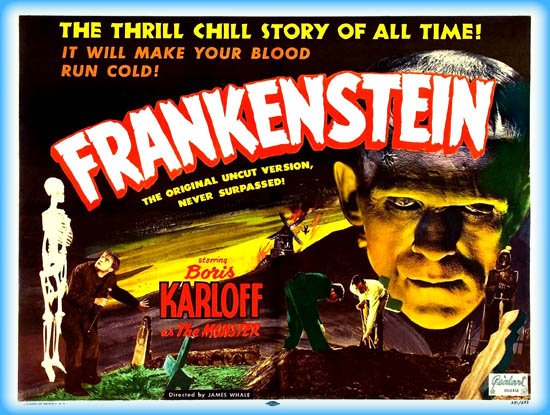
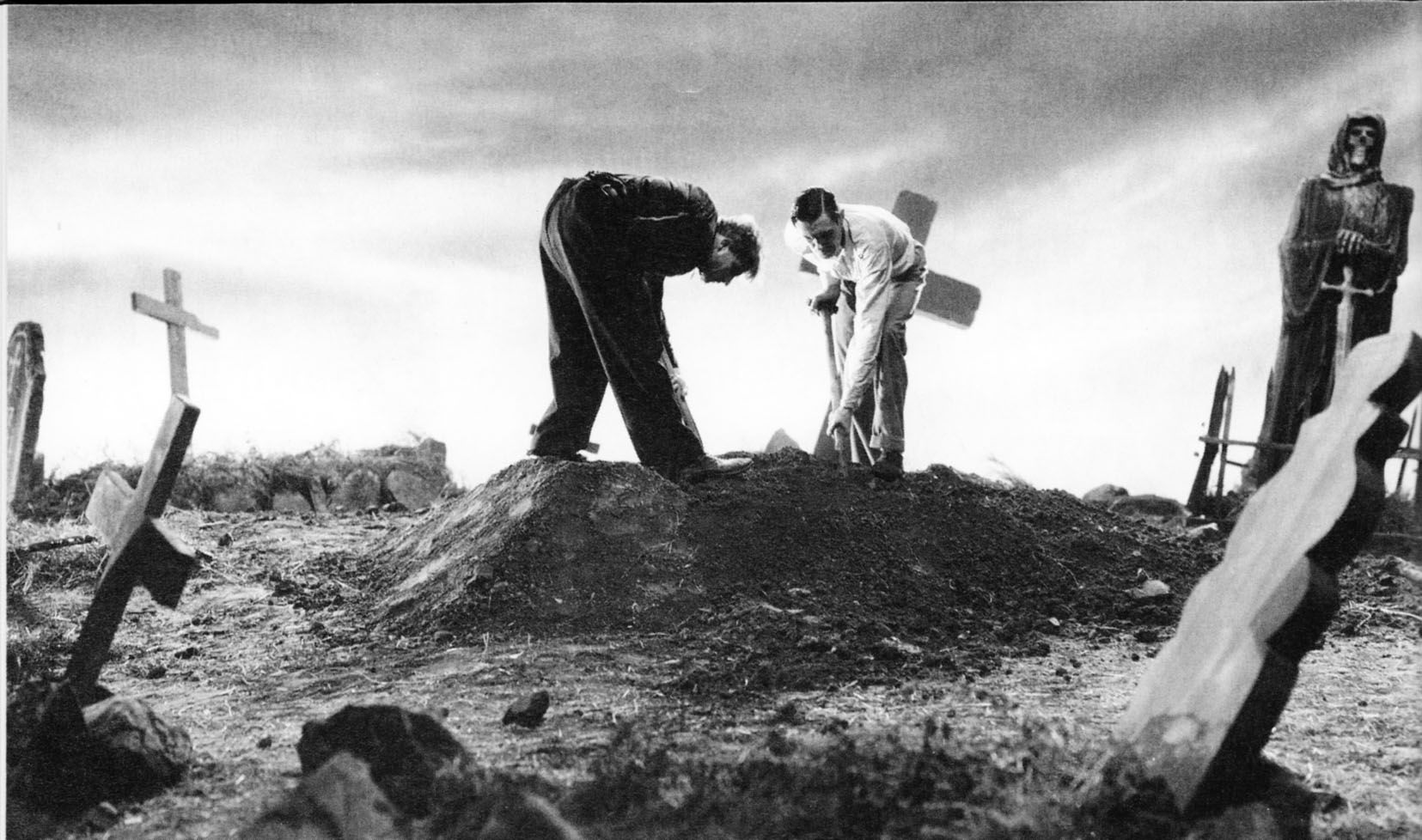
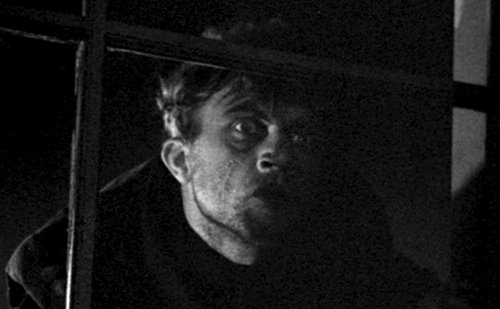
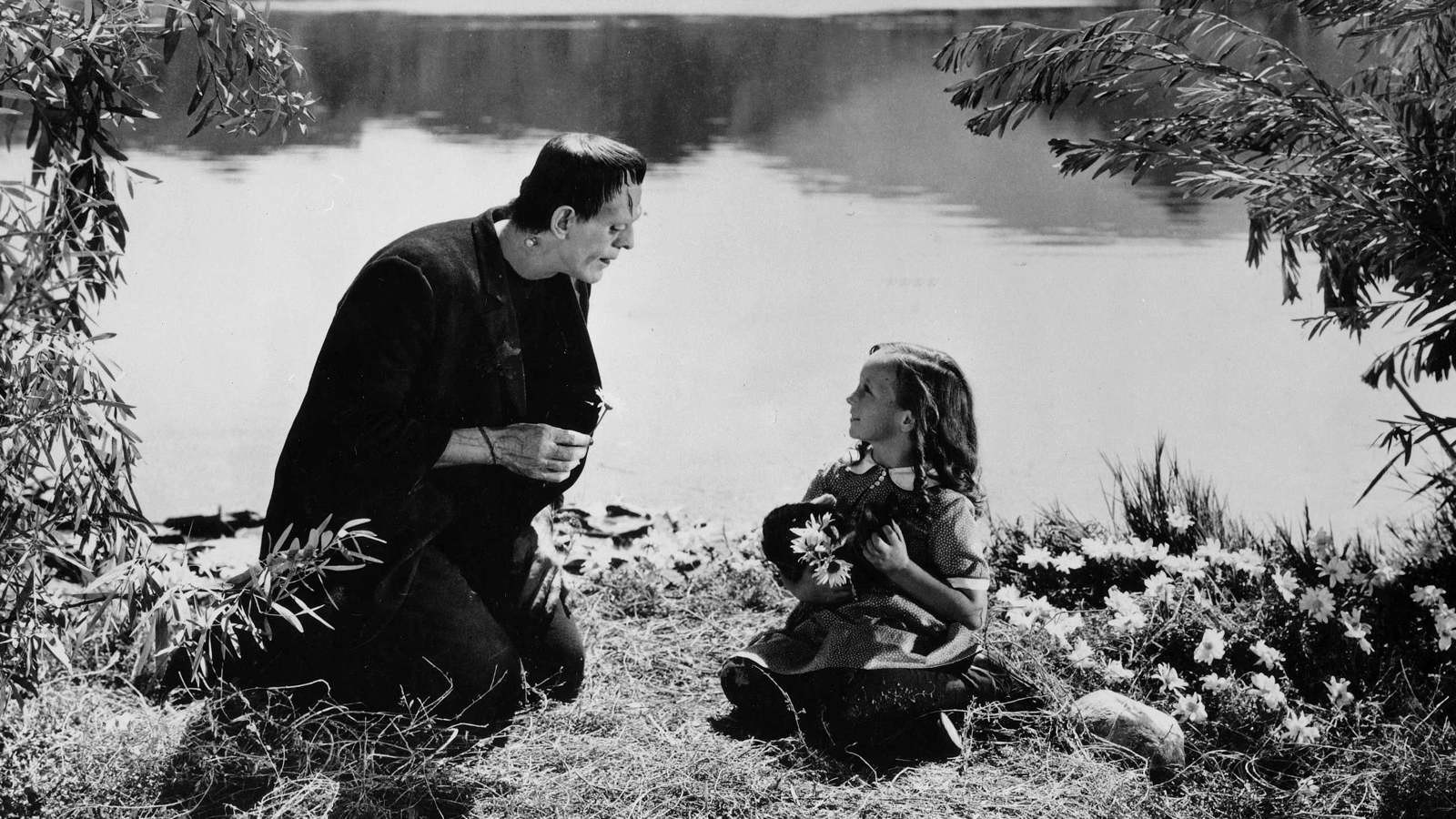
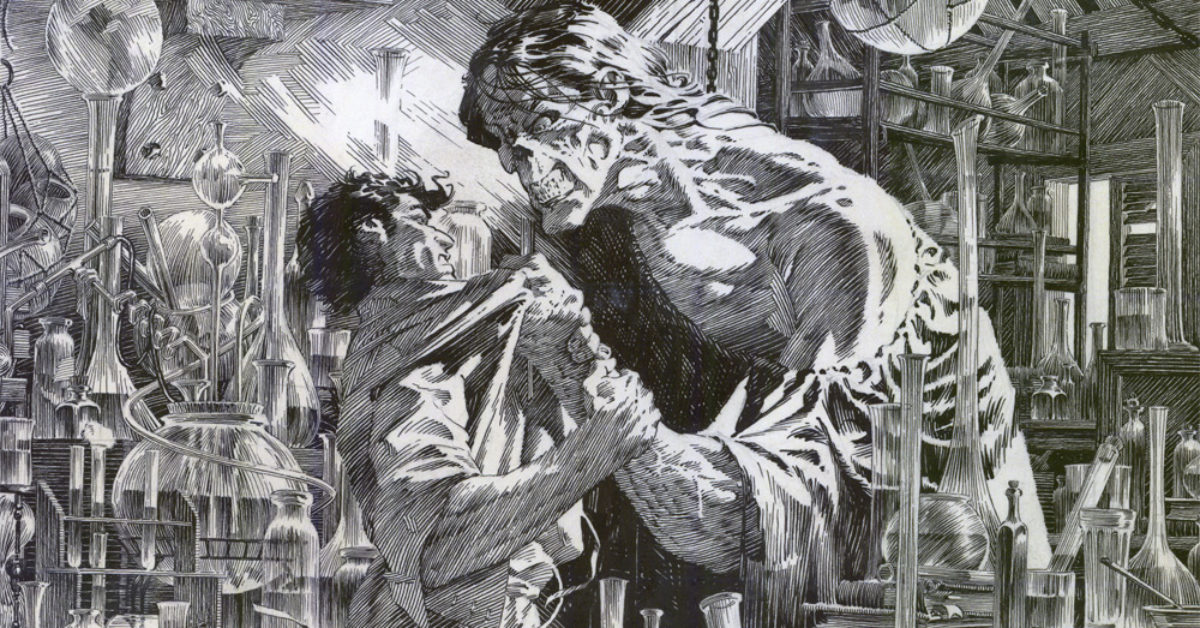
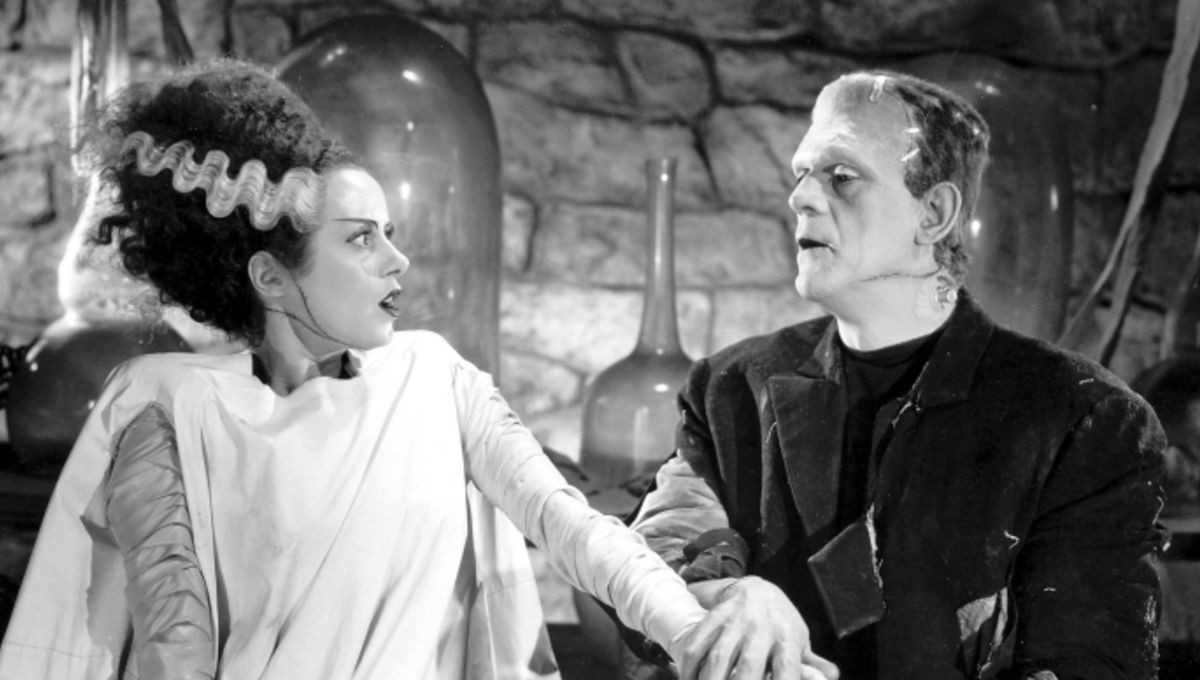
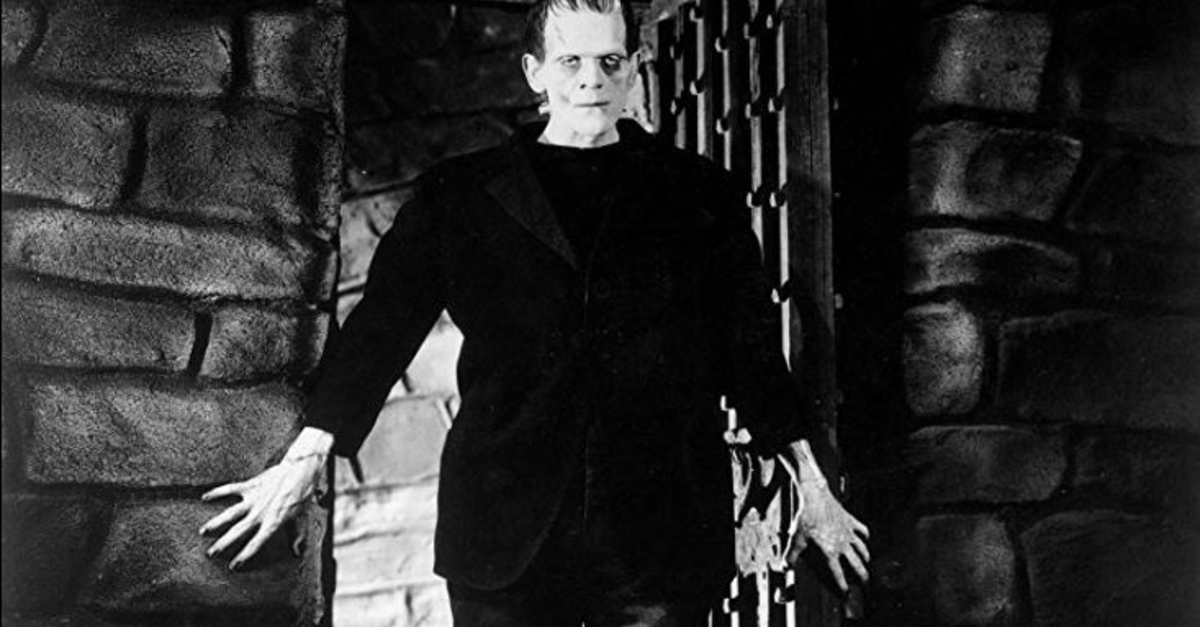
No comments:
Post a Comment